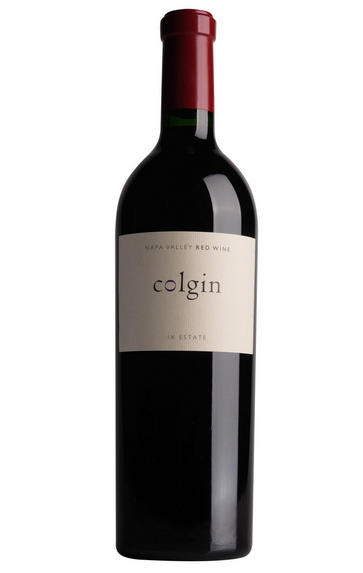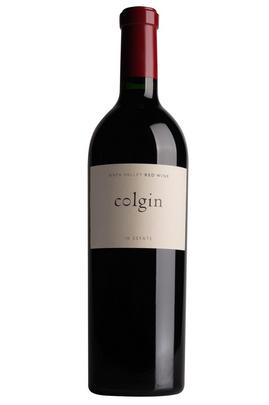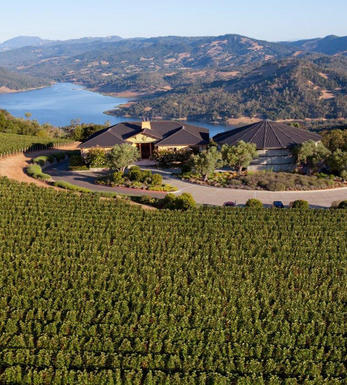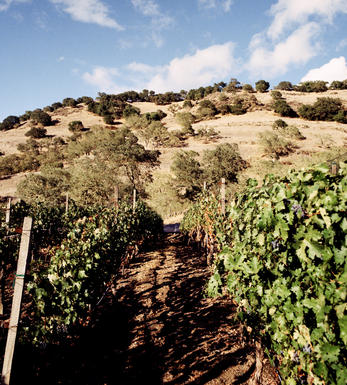
2018 Colgin, IX Estate, Napa Valley, California, USA

Critics reviews
Drink 2024 - 2043
Antonio Galloni, vinous.com (Jan 2021)
Drink 2024 - 2064
Lisa Perrotti-Brown, Wine Advocate (Nov 2020)
James Molesworth, Wine Spectator (Oct 2021)
James Suckling, jamessuckling.com (Aug 2021)
Drink 2026 - 2068
Jeb Dunnuck, jebdunnuck.com (Jan 2021)
About this WINE

Colgin Cellars
Founded in 1992 in the Napa Valley, Colgin Cellars is one of the world’s most exciting fine wine producers. The story here began three decades ago. Ann Colgin, driven by a love for the land and a reverence for fine wine, was inspired to source the fruit for her first wine. This bottling, Herb Lamb, came from exceptional hillside vineyards that yield wines of harmony, grace, and precision.
About Colgin Cellars
In the years that followed, Colgin Cellars gradually added to their hillside vineyard holdings. Their reputation burgeoned and, in 2005, they were named “One of the Fifty Greatest Wine Estates in the World” by Robert Parker. Today, these singular wines have a devoted following.
Typically, Colgin Cellars’ wines are sold through direct allocation to private clients. However, we have been fortunate to secure small parcels of their four wines. These include the three Cabernet Sauvignon-based bottlings – “Tychson Hill,” “Cariad,” and “IX Estate” – in addition to the “IX Estate” Syrah.
In the vineyard
Colgin Cellars has three vineyard sites, the oldest of which is Tychson Hill. Situated just north of the town of St. Helena, this – the smallest of the Colgin Cellars vineyards (2.4 hectares) – has historic roots starting in 1860. Owned by Josephine Tychson in the late 19th-century, she was the first woman to build a winery in the Napa Valley. The vineyard was removed during Prohibition, rediscovered by Colgin in the mid-1990s, and replanted with heritage clones of Cabernet Sauvignon.
Cariad, south of Tychson Hill, is a 3.2-hectare site on volcanic, stony soils with gravelly alluvium. Here, the mineral-rich soils coupled with the cool mountain climate translate into sublime Cabernet Sauvignon-based blends.
Last, but by no means least, is IX Estate, where the Colgin Cellars winery is situated. Carved from an ancient lava flow overlooking the Napa Valley, its eight hectares, rich in well-draining clays and weathered igneous rock soils, are planted with Cabernet Sauvignon, Cabernet Franc, Merlot, Petit Verdot, and Syrah.

Napa Valley
North Coast's Napa Valley is California's most famous viticultural area (AVA), claiming some of the most expensive agricultural land in the world and producing wines of ‘cult’ status.
Its 16,000 ha of vines lie over a strip (40 miles long-5 miles wide) of diverse soils (clay, gravely, volcanic), with its northernmost end on the side of Mountain Helena and its foot in San Francisco Bay. The valley is framed by two mountains ranges Vaca (to the north) and Mayacamas (to the south), yet the main climatic influence is the cool wind and fog that is sucked in from San Pablo Bay during the afternoon, allowing grapes to ripen slowly and evenly.
The area enjoys a variety of unique microclimates, as temperatures can vary dramatically as much as 15 degrees, from the north to the south end of the valley. These differences have led to the creation of several sub-AVAs (14 in total) including:
Atlas Peak, Chiles Valley District, Diamond Mountain District, Howell Mountain, Los Carneros, Mt. Veeder, Oakville, Rutherford, St. Helena, Spring Mountain District, Stags Leap District, Yountville, Wild Horse Valley and Oak Knoll District. The Calistoga AVA is still pending approval.
Both the “Napa Valley” designation and the sub-AVA name must appear on the wine label simultaneously, with the exception of wines from the Carneros AVA, which is shared between the Napa Valley and the Sonoma County.
Cabernet Sauvignon is the undisputed king of Napa grapes, occupying over 45% of the vineyard acreage, followed by (predominantly) Chardonnay, Sauvignon Blanc, Chenin Blanc, Riesling, Zinfandel, Merlot, Cab. Franc and to a lesser extent Petite Sirah, Sangiovese, Barbera, Dolcetto.
Recommended Producers
Frog's Leap, Dominus, David Ramey, Viader, Stag's Leap Cellars, Paras Vineyards, Heitz.

Cabernet Sauvignon Blend
Cabernet Sauvignon lends itself particularly well in blends with Merlot. This is actually the archetypal Bordeaux blend, though in different proportions in the sub-regions and sometimes topped up with Cabernet Franc, Malbec, and Petit Verdot.
In the Médoc and Graves the percentage of Cabernet Sauvignon in the blend can range from 95% (Mouton-Rothschild) to as low as 40%. It is particularly suited to the dry, warm, free- draining, gravel-rich soils and is responsible for the redolent cassis characteristics as well as the depth of colour, tannic structure and pronounced acidity of Médoc wines. However 100% Cabernet Sauvignon wines can be slightly hollow-tasting in the middle palate and Merlot with its generous, fleshy fruit flavours acts as a perfect foil by filling in this cavity.
In St-Emilion and Pomerol, the blends are Merlot dominated as Cabernet Sauvignon can struggle to ripen there - when it is included, it adds structure and body to the wine. Sassicaia is the most famous Bordeaux blend in Italy and has spawned many imitations, whereby the blend is now firmly established in the New World and particularly in California and Australia.


Buying options
Add to wishlist
Description
The has an incredibly deep and complex nose, combining sweet raspberries, blackberries and blackcurrants with vanilla cream. With time, a dark perfume emerges with an edge of elderflower and raspberry cordial. A high level of tannin has initial grip but then melts away like snowflakes. Succulent fruit rolls around the palate; the flavours become more savoury with each taste, bringing a pure, mineral finish, almost like water running off granite. This wine is so concentrated yet also so elegant – an unbelievable juxtaposition of power and restraint. Drink 2026-2065.
Catriona Felstead MW, Senior Wine Buyer, Berry Bros. & Rudd (Nov 2021)
wine at a glance
Delivery and quality guarantee